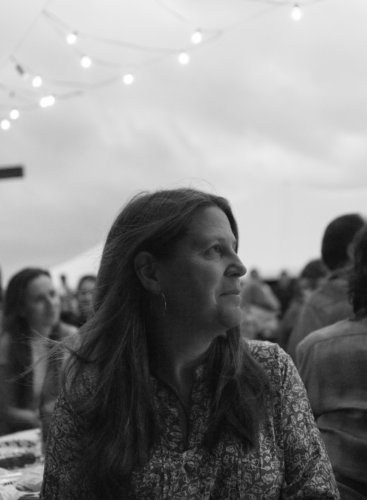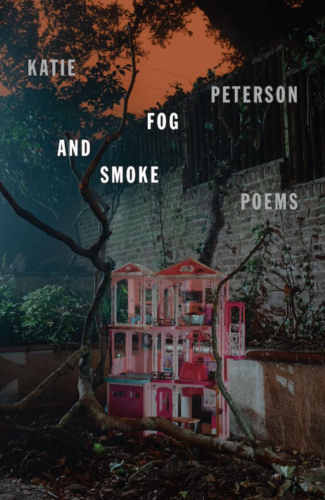Their symbols are single flames. Every firerequires a pretty name—Apple, Blue Jay, Coyote.They earned those names by starting where they did.And you can find them if you pause the arrowon the map, and press with your finger, but not too hard.If you do that, you’ll be sent backto the first map, laid out in its bordered shape,the template of the state.That isn’t what you wanted to see.But once there, you can advance,investigating fires from previous years, whose symbols are the same,placed differently, on identical maps, since the terrainhasn’t changed its surface, though the water tablewould tell a different story. Paradise and its shotgun canyonsa few years back, a fire in Trinity the previous that turned into a complex(they call a fire a complex when it grows)merging with the blaze that beganin lava beds. That perimeterincluded nearly half of a national monument.But—see!—you can no longer find those names.Last decade’s Rim Fire simply reads “contained.” The symbolsturn red the year we’re in. They gray themfor each year that’s gone before. The current mapchanges with the hour, look, the Sheep Firejust showed up on the shadowed topography near Lassen,where two years ago another fire raged,south of Susanville, town named for a miner’s daughter,which didn’t have a post office or bankuntil three years after its name became official,or so they teach you in school. The map says it’s just 3 percent contained.But like all numbers, these mislead,as success isn’t about amount for those who fightbut some cessation of agility—if the fire can jump,can they keep up? A fire can burn containedmuch longer than it does what it came to do.Under these symbols, the map of California wrinkleslike a sheet on a sad bed, easy to fix, but hard to make rightwhen one remains preoccupied with troubles,as the relationship that happened there caused youto abandon the basics of care,and has assumed a quality of being impossibleto end or heal, since getting outmeans leaving for good, so you wonder,will you be followedfor years by all you’ve saidand done? They colored the mapwhere the land deserved it. The desert shouldn’t claimeverything the eye can see from space. Doesn’t waterdeserve a better color than white? But just as many flames live there,in the green spaces, where mountains hold and givethe snowpack that diminishes each year—red in the present tense, they are nearly festive, like lights on trees.Incidents on the wane turn a darker green.The map disappears five years after they make it.Twelve years ago was awful—now it’s gone. You’d have to talk to someonewho lived through those fires to find out what burned.In no year does this map record our smoke.
Feature Date
- February 26, 2024
Series
- What Sparks Poetry
Selected By
Share This Poem
Print This Poem
Excerpted from FOG AND SMOKE: Poems by Katie Peterson. Published by Farrar, Straus and Giroux. Copyright © 2024 by Katie Peterson. All rights reserved.

Katie Peterson is the author of Fog and Smoke, published by FSG in early 2024. Her previous books include Life in a Field, winner of the Omnidawn Open Books Prize, and A Piece of Good News, a finalist for the Northern California Book Award. Her work has been translated into French, Korean, and Portuguese, and a Selected Poems in French (translated by Aude Pivin), with an introduction by Louise Gluck, will be published by Cheyne Editeur in 2025. Her work has been recognized by awards and fellowships, including the Rilke Prize from the University of North Texas for The Accounts, a Literature Award from the American Academy of Arts and Letters, a grant from the Foundation for Contemporary Arts, and a fellowship from the Radcliffe Institute for Advanced Study. A Consulting Editor for the Phoenix Poets Series of the University of Chicago Press, Peterson directs the Creative Writing Program at UC Davis, where she is Professor of English and a Chancellor’s Fellow.

New York, New York
Macmillan
"A book of terrified joy. It is a book that moves day by day, saturated in the moment . . . Peterson, an excellent storyteller . . . deftly braids personal lyric with narrative through the four unnamed sections of Fog and Smoke, moving between life and the ephemera that surrounds it, making meaning."
—Valerie Duff-Strautmann, Los Angeles Review of Books
"Each line shines in the sun like stained glass. Fog and Smoke is a triumph of observation and intimacy that invigorates the reader to act for the natural world."
—Michael Ruzicka, Booklist (starred review)
Poetry Daily Depends on You
With your support, we make reading the best contemporary poetry a treasured daily experience. Consider a contribution today.



